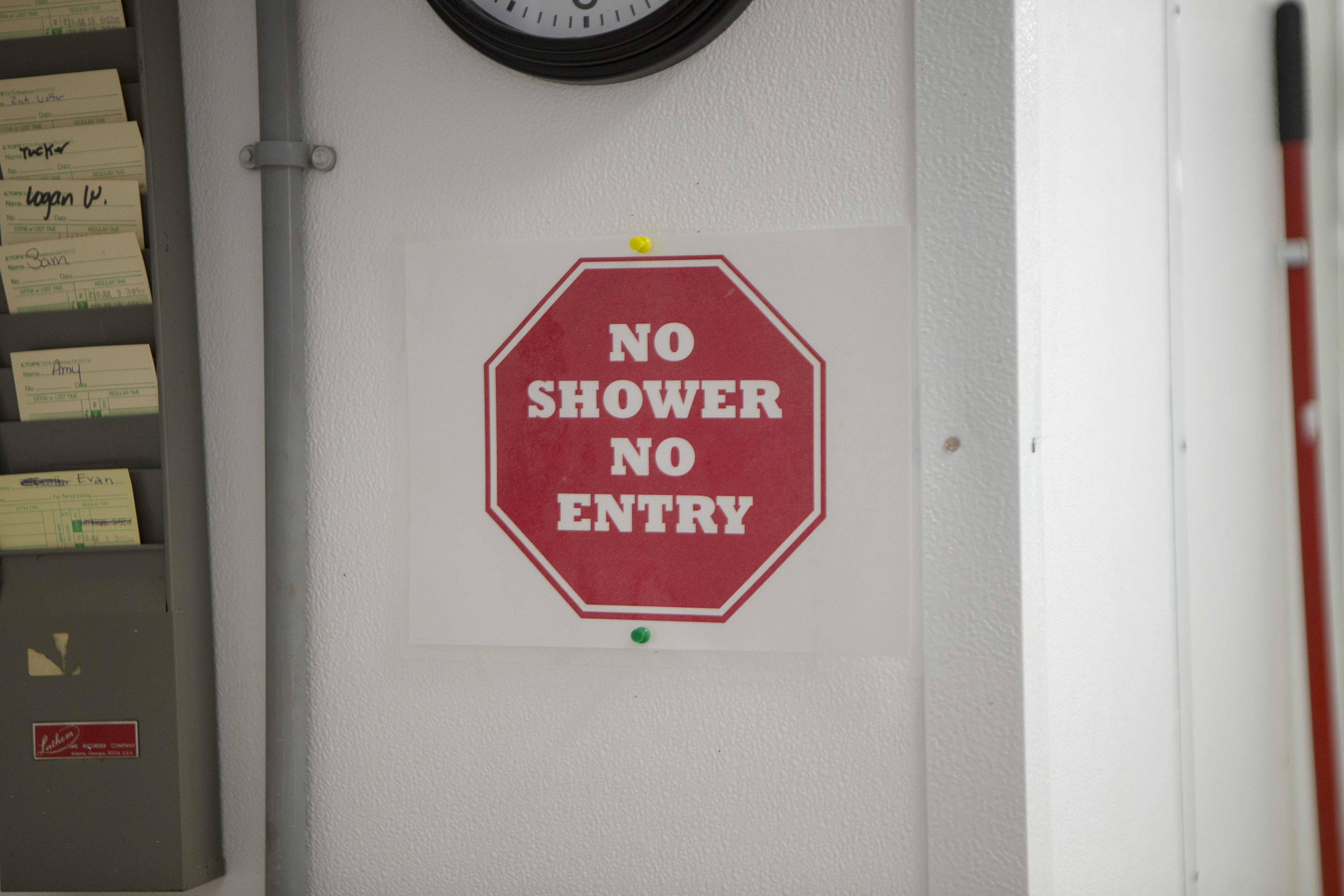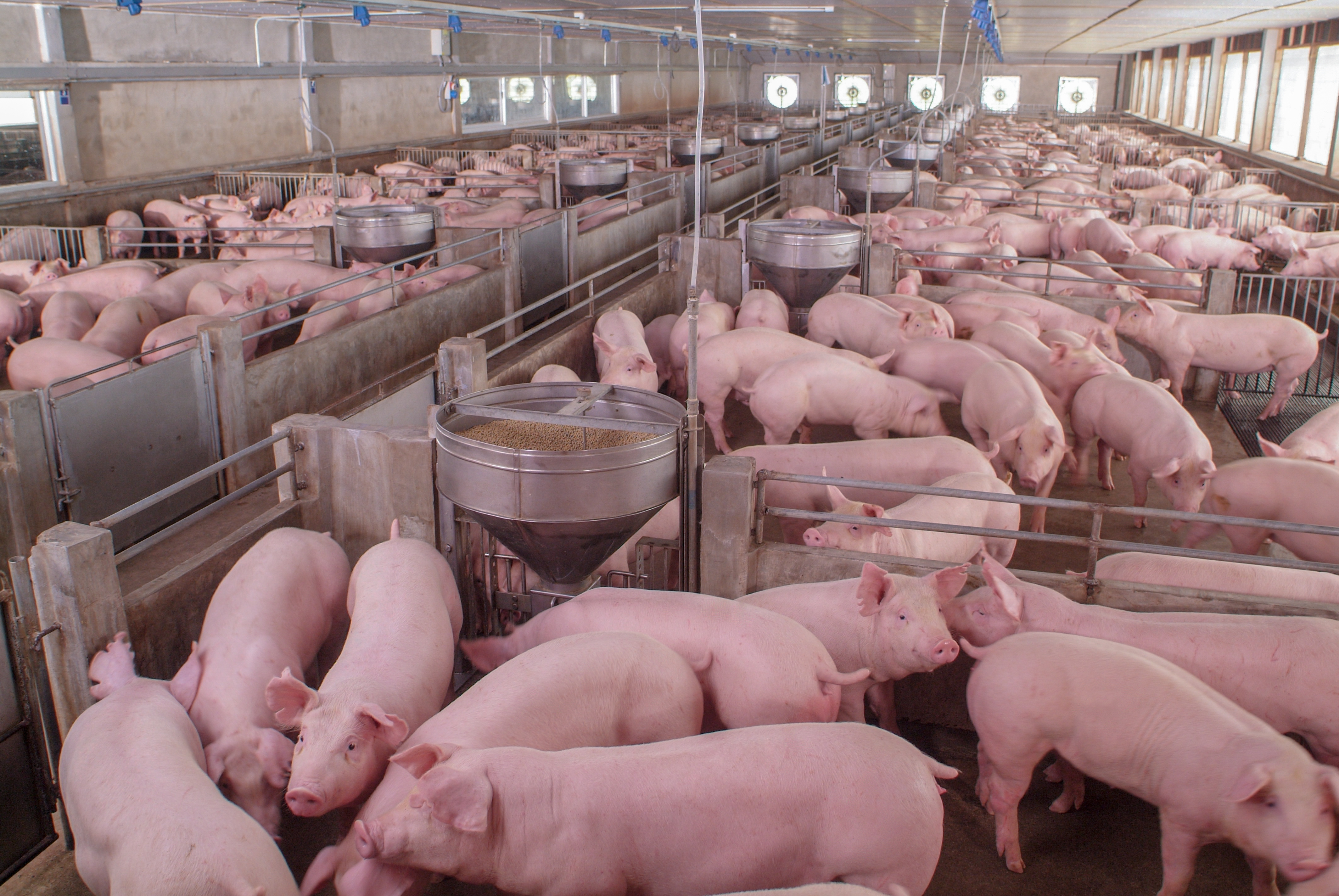



Countering contamination – biosecurity best practice in action
With every disease outbreak farmers and researchers learn how to make pig barns more secure and improve biosecurity.Around 35 years ago, Randy Spronk, a third-generation pig farmer from Minnesota, noticed an unusually high mortality rate among his suckling piglets. Concerned, he ran some checks and found confirmation that there was an outbreak of pseudorabies on his farm. He immediately contacted the state veterinarian’s office.
The disease was also found on a neighbour’s farm, and a dead cat in his own barn led Spronk and the veterinary staff to conclude that the stray pet had wandered from the neighbour’s property into Spronk’s barns. His entire operation had to be cleaned and the barns had to be disinfected. Breeding stopped immediately. Once the last of the piglets had been weaned, the sows were sold to a cull sow buyer.
It only took a few weeks before Spronk’s farm was up and running again, but with today’s more comprehensive biosecurity procedures, regulations and best practices, an outbreak like that would be devastating.
Thankfully, pseudorabies has now been eliminated in the US, but other diseases are still an ever-present source of concern. What’s also changed in the past 35 years is the focus of the industry’s efforts to combat infection; today, instead of trying to contain outbreaks when they occur, the focus is on prevention and biosecurity.
On Randy Spronk’s farm now, entering the sow barn is a multi-step process and an all-day event. Spronk will enter the barn, then immediately strip off what he’s wearing and shower. His clothing goes into storage on the “dirty” side of the barn, he enters the shower for a full wash-down (including washing his hair), then exits the shower on the “clean side” of the barn – where his barn-only clothing is waiting for him.

Courtesy of National Pork Board and the Pork Checkoff. Des Moines, IA USA
These clothes and the towels are all laundered inside the barn. Nothing from the outside enters the barn without being thoroughly cleaned.
Once in the barn, Spronk remains there for the day. The fewer times he enters, the smaller chance there is that he will bring in an outside pathogen that might cause illness in his sows. Even the air is cleaned before it circulates inside the barns. Hospital-grade air filters keep microscopic dust particles from outside the barn from entering – since dust particles might carry pathogens that could infect the pigs.
On Spronk’s farm, the pigs are separated by age. The sow barn has the highest security measures. Other barns require people entering to put on coveralls and new shoes at a bench that blocks entry – an access system known as a “Danish entry”.
Transportation in and out of the farm is also subject to strict biosecurity measures. Trailers that have been used to transport pigs are washed and dried, and are subject to a wait time before they can be used again. Spronk’s barn has invested in barn-specific trailers to help minimise the risk that a disease from the farrow barn enters the sow barn.

The order in which contact is made between the animals and the outside world has also become an important aspect of the farm’s biosecurity regime. Trailers, vehicles and people are allowed to move relatively freely down the biosecurity supply line. The truck delivering feed, for instance, will stop at the sow barns first before moving on to visit the finishing barns last – where the pigs are housed before being taken to market.
Moving back up the supply line, however, is more complicated. It’s not just a matter of showering and cleaning trucks and trailers: anyone or anything that has been at the finishing barn might have to wait up to three days before they are allowed back into the sow barns. This quarantine period varies in length depending on which barn has been visited last, and it has been put in place to make sure no diseases are spread from one site to the next.
Every time there is a disease outbreak, pig farmers like Spronk are watching and learning. Many of the security measures used today were in place on his farm five years ago when there was an outbreak of porcine epidemic diarrhoea virus (PEDV) but didn’t stop his animals being infected. It was the first time a virus had been traced to the feed in Spronk’s supply chain; no one, he says, had worried about the feed mills before that.
As a result of the PEDV outbreak, the feed mill now operates a waiting period between the moment the mill is supplied with fresh feed and the time when the feed is blended with other ingredients before delivery to the farms.
Safety in numbers
Today, Spronk’s farm is part of the Pipestone System, a company that connects family farms by allowing them to invest in sows that are housed in a shared barn, which is centrally maintained and operated by Pipestone. The weaned pigs Spronk needs on his farm come from the Pipestone network – a system that reduces the risk of outside disease faced by both him and the other farmers involved.
As a result, even though African swine fever (ASF) continues to spread in China and other parts of the world, Spronk remains confident in his biosecurity measures. But, he says, “Even if I’m doing everything right, someone else might not be.” His biggest concern isn’t the biosecurity of his immediate neighbourhood, but that a traveller from an infected country might try to bring pork products into the country. Since many people don’t understand the potential harm that bringing in pork products might cause, imported disease is a constant threat. It is why US international airports, as with many other countries around the world, have the Beagle Brigade – dogs trained to sniff out agricultural products in passengers’ luggage and alert handlers to their presence.
How can small-scale farms defend themselves against such large-scale threats, though? The key is to know how viruses work, says Spronk. If farmers understand the basics – such as the fact that viruses need moisture to survive – and pay attention to the research into how long it takes viruses to die without access to moisture, they are better equipped to protect their pigs.
In a research paper published in March 2018, Dr Scott Dee, a veterinarian from Minnesota’s Pipestone Veterinary Services, reported that AFS is very stable outside of pigs. While humans and other animals cannot develop the disease themselves, they can spread the virus that causes it; AFS is also spread via common ingredients of pig feed.
Dee’s team at South Dakota State University and Kansas State University had been conducting research into how feed ingredients can transmit various swine disease viruses since 2014. The publication of their findings this year has proved very timely, since China announced an outbreak of ASF in August and it continues to spread. Dee’s report states that the introduction of ASF to the US could cost $16.5 billion during the first year of the outbreak alone.
In Dee’s study of the virus’s survival time outside pigs’ bodies, it took 78 days for most of the ASF virus to die – at that point, his team found less than one percent of the virus remained alive. This is a sobering thought when you consider that it takes less than half that time (about 35 days) for shipping containers of feed to travel to the US.
Accordingly, farmers have asked feed providers to hold the imported feed for an additional two months before they sell it on to the farmers. This 90-day time lag should kill off 99.99 percent of the virus, said Dr Dave Pyburn, vice president of science and technology for the National Pork Board.
Divide and conquer
Pig production in the last 25 years has changed dramatically, both in the United States and in other parts of the world.
One innovation has been HEPA air filters fitted on many barns, which help to keep out porcine reproductive and respiratory syndrome (PRRS) – caused by a virus that is small enough to be transmitted through the air via dust particles.
Dividing the pigs into age groups, and separating them to be housed on different farms – as Spronk does with the Pipestone System – helps reduce the risk of disease outbreaks. Older sows, for instance, are more likely to get sick than younger sows, so keeping them separated improves the younger sows’ chances of staying healthy.
Most producers now have an all-in, all-out system. Barns are emptied and cleaned each time a new group of pigs is introduced, which reduces the likelihood that the new animals will catch anything left behind by the old batch. Some farms are using ultraviolet heat treatments to bake the trucks and kill off any lingering pathogens, says Pyburn. UV lights or wipes, meanwhile, are used to clean containers and tools that are brought into many barns.

As farmers worry about ASF, they are giving themselves longer periods of downtime they after being exposed to other animals before they enter a pig barn. Farmers are double- and triple-checking their biosecurity measures and ensuring everyone on the farm understands the processes. This includes telling employees they’re not allowed to bring any pork products to the farm for lunch. Their food is never supposed to be near the pigs in any case, but banning pork products is an additional precaution, says Spronk.
According to Spronk the focus today is on ASF, but before that, farmers should have been aware of classical swine fever and foot-and-mouth disease. He says he’s met with USDA officials to let them know his top concern is people bring in meats illegally in luggage.
“We’ve asked the USDA to increase those inspections… We’ve asked them to get the beagles out.”
As reported by Rachel Lane
.jpg)
Rachel grew up on a farm in Ohio before becoming a journalist. She specialises in agriculture, government policy and international trade in the United States.









